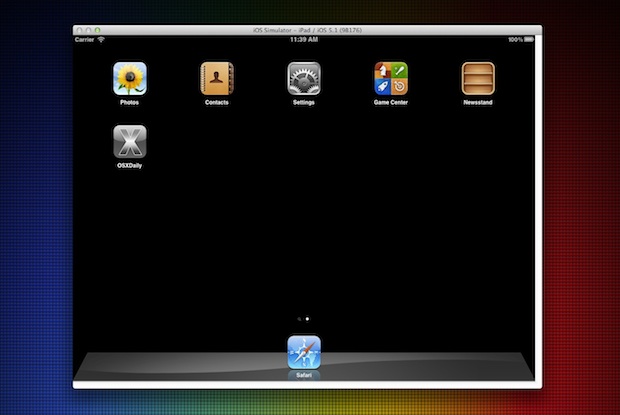I am not testing website,just develop a mac app with a webview,which i want to emlate iphone safari. – NeXT5tep Mar 22 '11 at 12:48 @NeXT5tep Your question can be interpreted in to ways. IPortable simply answered your exact question (how to emulate iPhone Safari in OSX). Top 10 Gaming Emulators for iPhone in 2021 Over the last few years, specifically the last few months, gaming has become incredibly popular on the iPhone and iPad, not just because we are spending so much time at home now, but because the improvements made to the popular iOS devices have made it easier to play. Enjoy the video! Oct 23, 2020 Xamarin TestFlight is an iOS emulator that lets you run iOS apps on Windows PC and also lets you airplay iPhone to Mac as well. And it runs on both really well! And it runs on both really well! For the moment the app is owned by Apple, so, it is very reliable. That’s probably the best way to play iPhone games on Mac. This is one of the methods through Which lets you simulate iPhone games on Mac without the use of any third-party apps. Let’s now explore a couple of other ways such as using a simulator and an emulator for playing iPhone games on Mac. Use iPadian Simulator for Mac to Play iPhone Games.
- Simulate Iphone On Mac
- Iphone Settings Simulator
- Iphone Simulator Mac
- How To Emulate Iphone On Mac
- Simulate Iphone On Mac Browser
- Ios Emulator For Mac
 -->
-->The Remoted iOS Simulator for Windows allows you to test your apps on aniOS simulator displayed in Windows alongside Visual Studio 2019 and Visual Studio 2017.
Simulate Iphone On Mac
Getting started
The Remoted iOS Simulator for Windows is installed automatically as partof Xamarin in Visual Studio 2019 and Visual Studio 2017. To use it, follow these steps:
- Pair Visual Studio 2019 to a Mac Build host.
- In Visual Studio, start debugging an iOS or tvOS project. TheRemoted iOS Simulator for Windows will appear on your Windows machine.
Watch this video for a step-by-step guide.
Simulator window
The toolbar at the top of the simulator's window contains a number of useful buttons:
Home – Simulates the home button on an iOS device.
Lock – Locks the simulator (swipe to unlock).
Screenshot – Saves a screenshot of the simulator (stored in PicturesXamariniOS Simulator).
Settings – Displays keyboard, location, and other settings.
Other options – Brings up various simulator options such as rotation, shake gestures, and Touch ID.
Settings
Clicking the toolbar's gear icon opens the Settings window:


These settings allow you to enable the hardware keyboard, choose alocation that the device should report (static and moving locations areboth supported), enable Touch ID, and reset the content and settings forthe simulator.
Other options
The toolbar's ellipsis button reveals other options such as rotation,shake gestures, and rebooting. These same options can be viewed as a listby right-clicking anywhere in the simulator's window:
Iphone Settings Simulator
Touchscreen support
Iphone Simulator Mac
Most modern Windows computers have touch screens. Since the Remoted iOSSimulator for Windows supports touch interactions, you can test your appwith the same pinch, swipe, and multi-finger touch gestures that you usewith physical iOS devices.
Similarly, the Remoted iOS Simulator for Windows treats Windows Stylusinput as Apple Pencil input.
Sound handling
Sounds played by the simulator will come from the host Mac's speakers.iOS sounds are not heard on the Windows computer.
How To Emulate Iphone On Mac
Disabling the Remoted iOS Simulator for Windows

Simulate Iphone On Mac Browser

To disable the Remoted iOS Simulator for Windows, navigate toTools > Options > Xamarin > iOS Settings and uncheckRemote Simulator to Windows.
With this option disabled, debugging opens the iOS Simulator on the connected Mac build host.
Troubleshooting
Ios Emulator For Mac
If you experience issues with the Remoted iOS Simulator, you can view the logs in these locations:
- Mac –
~/Library/Logs/Xamarin/Simulator.Server - Windows –
%LOCALAPPDATA%XamarinLogsXamarin.Simulator
If you report a problem in Visual Studio, attaching these logs might be helpful (there are options to keep uploads private).